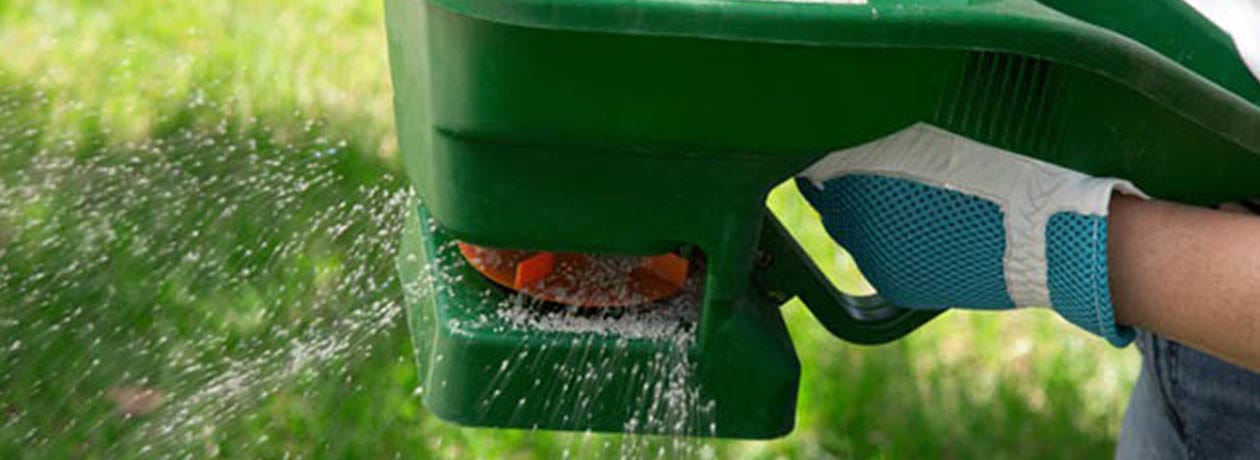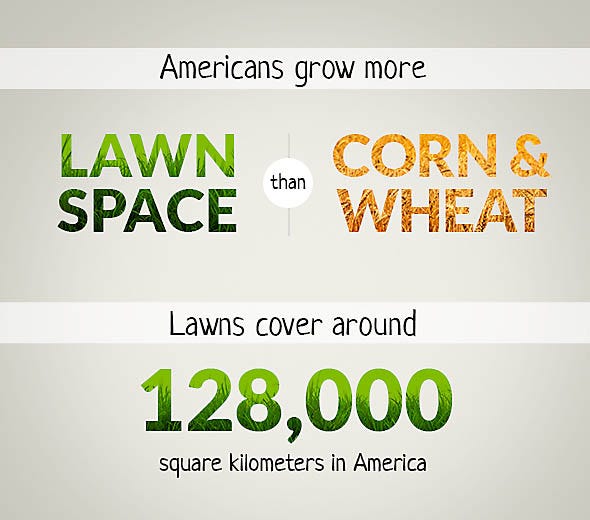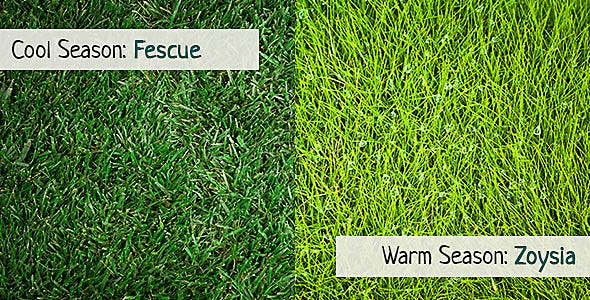When to Fertilize the Lawn

What do you think of when you hear the word lawn? A rolling green carpet forming a picture-perfect frame for your home? A place for your children to safely play in peace? Whatever image the word lawn conjures in your mind, you’re not alone. Americans love lawns.
According to NASA - yes, the National Aeronautics and Space Administration - satellite data reveals that Americans grow more lawn space than corn and wheat. Between residential and commercial lawns, golf courses and other recreational facilities, lawns cover 128,000 square kilometers in America. That’s a lot of lawn!

Use Safe Lawn Fertilizer for Children and Pets
Consider organic lawn products when it comes time to fertilize your own patch of heaven this spring. It’s not only what you’re adding to your lawn. On a national level, it’s what every commercial and residential landscaper is adding to that combined 128,000 square kilometers of lawn.
What you add to the lawn is absorbed and used by grass, but it also runs off into the streets. From there, it washes into the storm sewers, and flows into sumps, rain water collection basins, streams, rivers, lakes and oceans.
According to the University of Vermont, nitrogen and phosphorous from fertilizer run-off and other sources can cause algae blooms and fish kills. Although it might not seem like a lot, that bag of lawn fertilizer purchased from a local home and garden center, if used improperly, adds to the cumulative environmental impact.
Whether you’re looking for safe lawn fertilizer for children, pet friendly lawn care, organic lawn care or simply lawn fertilizer you can use with a clear conscience, you have many options. It’s possible to grow a lush, green lawn without causing harm to the environment.
Conduct a Soil Test
Lawns are usually planted with a mixture of turf grass suited for your climate. When planting a new lawn, or restoring an existing lawn, start with a soil test just as you would if you’re planting a vegetable or flower garden.
A soil test, conducted by a local Cooperative Extension Office, will help you understand the pH of the soil, the soil profile, and its nutrient content. After the test, the Extension Agent can recommend the appropriate amendments to add to the soil to boost the lawn’s health or to give a new lawn a fresh start.
Identify The Grass Type
Before fertilizing a lawn, identify whether it’s a cool season, warm season or transitional zone grass. The northern third of the United States is considered cool season. A rather wide belt across the center of the country, extending from about halfway through California eastward to Virginia and North Carolina is considered the transitional zone. The lower third of the country usually plants warm season grasses.
If you’re not sure what’s planted in the yard, a good rule of thumb is just to peek outside during the winter. Warm season grasses turn brown after the first frost. Cool season grasses stay green during the winter but may struggle in excess heat.

Understand Organic Lawn Fertilizer
Fertilizers are marked with three numbers, arranged in a consistent sequence with dashes in between the numbers. No matter what product you pick up, fertilizer is marked in the following sequence:

First number. N for nitrogen. Nitrogen helps boost leaf production and turns grass green.

Second number. P for phosphate. Phosphate boosts flower production, which is why flower and vegetable garden fertilizers tend to have higher middle numbers, but lawn fertilizers have a low middle number.

Third number. K for potash. This helps build strong roots.
Most lawn fertilizers have a ratio of 3-1-2, or three parts nitrogen for strong leaf development, one part phosphate to balance the mix, and two parts to the whole of potash for strong roots. Whether you choose organic lawn fertilizer or other fertilizers, the ratios should be consistent. Safer® Brand products such as the Safer® Brand Lawn Care Program have a high nitrogen to potash ratio and almost no phosphate, a smart idea for organic lawn care. Since lawns need little phosphate, why add it to the mix? It will only run off into the environment if it’s not used.
Know the Difference Between Organic Vs. Chemical Fertilizers
The big difference between organic vs. chemical fertilizer is how fast lawns green depending on the fertilizer used. Most organic lawn care fertilizers use a slow-release form of nitrogen. Soil microbes must break down the nitrogen; it may take several weeks or months to release all of the nitrogen bound into the fertilizer and dissolve it into water for the grass to absorb.
Chemical fertilizers green the lawn faster, but the run off can have catastrophic consequences for the environment. Eco-friendly lawn care practices may not make your lawn immediately look as nice as your neighbor’s each spring, but you’ll have peace of mind knowing the slow release, natural fertilizers offer a safe lawn for children, pets and the environment.
When is the Best Time to Fertilize the Lawn
Just as you feed a baby different food as he grows into a toddler, child and teenager, lawns are also fed differently depending on their age. New lawns should be fed three weeks after the grass seed emerges. Existing lawns should be fed according to a simple seasonal calendar:
Spring. Apply the appropriate lawn fertilizer for your grass type (cool, warm or transitional) when you mow the lawn the first time in the spring. A broadcast spreader can help you evenly distribute pelletized or powdered fertilizer. Use only as much product as recommended by the manufacturer. More isn’t necessarily better when it comes to fertilizer.
Summer. Warm-season grass invests a great deal of energy into growth and repair during the summer months. If your lawn gets a lot of traffic, consider fertilizing it a second time in the summer. Avoid fertilizing cool-season grasses in the summer.
Fall. Lawns grow best when the nights are cool and there’s ample rain. After the springtime, fall is the best time for lawns, and many grass varieties grow vigorously during fall’s ideal conditions. Apply fertilizer one more time before the first frost.
